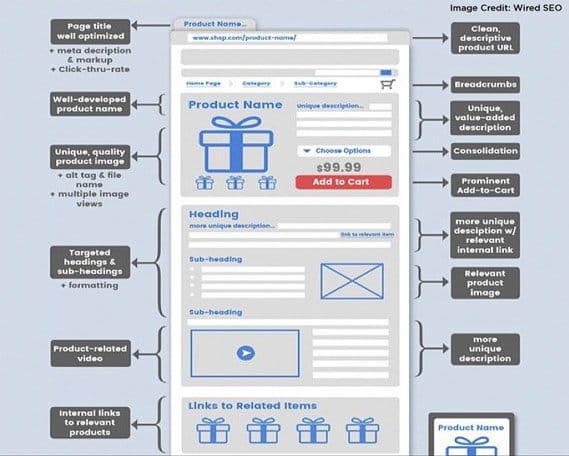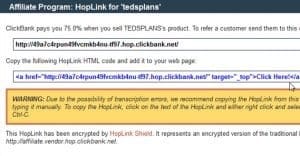How to Grow and Promote Your New eCommerce Store

There’s no better time than right now, when you’re setting up a new storefront, to plan for the future. I know there’s a lot going on, a lot involved with setting up a storefront, establishing branding, and making sure your website is stable. However, starting on the right foot will help you grow without the common pitfalls everyone encounters. Here are my tips for starting with that foothold.
Optimize Your Brand for Search
SEO is no joke. If you want to sell anything, you need to be in the top page of Google search results. I say the top page because, unfortunately, unless you’re actually the original manufacturer of a unique product, you won’t be in the top two or three results. Any big retailer that carries the products you carry is going to be higher up in the results than you will be. Still, being in the top page is often good enough. In fact, most of the rest of the tips on this list are aimed at either improving the SEO of your site, or getting sources of traffic outside of Google search results.
Rather than try to give you a 200-word primer on everything SEO, I’m going to give you some useful links you can explore for further reading. Check these out:
- The KISSmetrics Ultimate Guide to SEO for eCommerce Websites. This guide takes you step by step through various optimizations and data sources you can use to improve your search ranking. Learn how to find your ideal keywords, perform competitive research, find usability issues with your site, improve your user experience, and more. If you only read one post on this list, make it this one.
- 8 Google Shopping Product Feed Optimizations You Should Make Now from CPC Strategy. Showing up in the organic search results is good, but it’s not necessarily the only thing you want to do. Google’s shopping section is often overlooked and underutilized while people focus on competing with Amazon. These optimizations help you show up as a recommended product and storefront through Google’s suggestions.
- 15 Must-Have Plugins to Increase eCommerce Sales from Growtraffic. This is our guide to expanding the functionality of an eCommerce website using plugins that are either freely available or low cost. It includes plugins for WordPress, Shopify, and WooCommerce, to cover the major bases.
- How to Grow Your Online Shop from eCommerce-Platforms. This is an expert roundup post with 26 eCommerce and marketing experts weighing in with their tips. Experienced marketers ranging from Ian Cleary and Jeffrey Eisenberg to Rand Fishkin and Kristi Hines give their top tips.
Optimizing your shop to appear when users are looking for your products is pretty much essential if you want to make any sales at all.
Make Your Product Pages Unique
Possibly the number one issue that new eCommerce sites fall into is the desire to set up product pages quickly. What so many end up doing is finding their products on Amazon or on the original manufacturer’s website, then just copying and pasting the descriptions and product information over.
The problem with this is two-fold. First, it often counts as duplicate content. Yes, I’m aware that when it comes to technical information like product certifications or dimensions, you can’t really write it another way, and it looks goofy if you do. That’s fine. It’s more a problem when you’re copying the organically written product description itself. When you copy a product page almost wholesale, you run into duplicate content penalties from Google.
The second half of the problem is that, even if you escape a duplicate product penalty, you still run into problems with yours being the second – or third, or fourth, or tenth – copy of the product description on the internet, you’re getting a lot lower preference in Google. Even if they recognize that it’s a product description and is going to be relatively generic, they’ll still demote latecomers compared to the original.
Instead, do what everyone was scrambling to do when Panda first came out and make your product pages unique.
Include your product tech specs, and an organically written product description – which you can buy on a content mill like Textbroker pretty cheap – as well as other associated content. Reviews, testimonials, tutorials; look at Amazon for an example of all the sorts of extra content you can include. The more content there is on the page, the more fodder there is for the page to rank on Google.
Start a Social Media Presence
Starting up social media isn’t something you should delay for months, or until you’ve reached some growth milestone; it’s something you should do right out the gate. Of course, managing social media can be a lot of work, so I recommend you start small. Ignore Google+ unless your audience is entirely tech bros. Ignore Instagram unless you’re very focused on a young, graphical millennial audience. Ignore Pinterest; it just tends to clutter Google search results anyway.
The way I see it, you want to start and run with the Big Three for a new business: Facebook, Twitter, and LinkedIn.
- Facebook is obvious. It’s the biggest all-around social network in the world, and it has one of the most fabulous advertising networks available. If you don’t make a Page and run ads for your products, you’re missing out on a ton of virtually free traffic. As far as your actual posts are concerned, you should focus on posts that bring value to your audience. Share deals, share tutorials, share contests, but don’t constantly call for people to buy.
- Twitter is excellent for fast interactions and sharing news. Primarily, you’re going to be focused on using it for two things. The first is sharing new information, like when you’re out of stock on a product, when a product comes back in stock, and when you’re launching a new product. The second is customer service. When someone has a problem with shipping, a question about a product, or a concern about your security, you can address it directly on Twitter.
- LinkedIn is important for building a more corporate-style brand presence. It’s a way users can look you up to see if your brand is more legitimate or if it’s just some thin affiliate or dropshipper who is putting the minimum effort into running a site. A corporate page allows you to network with people who can promote you and people you might want to hire eventually, as well.
The key to successful social media is to keep them active. If they look abandoned, people will trust you less. Posting two or three times per week on Facebook, once a day on Twitter, and once a week on LinkedIn should be more than enough.
Start a Weekly Blog
A blog is one of the best ways to get your domain as a whole to have more value, which will in turn get Google to rank it more highly for various keywords that are relevant to your business. Write content and publish a new blog post once a week on a regular schedule. Stick to the schedule; if you post every Wednesday, keep posting every Wednesday. Aim for your posts to be at least 1000-1500 words long.
What should you write about? You want to bring value to your audience. If you sell shoes, write about how the shoes are manufactured, the history of the brand, what the shoes can be used for. If you sell computer parts, write about building custom machines, write about overclocking the parts, etc. The point is, you can write about something relevant to the products you sell without directly writing a “here’s why you should buy this product from us RIGHT NOW” article.
This carries over from the previous point. Both a blog and your social media presence can be filled with valuable content of various types you create. Here are some ideas:
- Tutorials. Show users how to use your product. You can start with the basics, but then you can create more advanced tutorials if your product has more advanced uses. A vacuum might not have many options, but a piece of software can have many uses. Every different way you can use the product is a chance to write and share a tutorial for how to do so.
- Infographics. Creating an infographic can be tedious and expensive, but it can also be worthwhile both as a way to get your brand more visibility and a way to educate your users. Infographics can cover products – such as their manufacturing process, their live cycle, or their uses cases – or it can cover your brand, such as showcasing ways you help your community, invest in sustainability, or work to reduce your carbon footprint.
- Video reviews. Taking advantage of YouTube, even if you don’t use it as a primary source of social viability, can be a great idea. Video, even if it’s a simple explainer video, a commercial, a glorified podcast, or a video version of a tutorial, is a lot more engaging than a blog post to a lot of people. Plus, you can post the video on Facebook natively a swell, which will get more engagement than just posting a YouTube link.
- Product maintenance guides. Many products break or wear out. If you’re catering to the kind of DIY audience that would like to be able to fix their own items, you can create maintenance guides. Don’t worry about losing sales to people who would buy replacements; plenty of people don’t have the time or the skills to do the maintenance themselves. At the same time, having those maintenance guides can make your product more alluring to the people who are into that kind of thing.
You can also create contests to get people more engaged on both your blog and your social media. A good contest can get people talking about your brand and commenting on your blog, depending on what you consider a good entry method.
The one key you need to remember for a contest is to only give away something relevant to your store. A discount code, a coupon, a free product or a free gift card; these can be good options. Just don’t give away something too generic. If you’re a store selling cosmetics and beauty supplies, and you give away the new iPhone X or whatever the most expensive item Apple is peddling this year happens to be, you’re going to have a ton of people sign up because they want that iPhone. They won’t care who you are and they’ll never engage with you again. All they want is the tech.
Create a Unique Selling Point
At the end of the day, even if you do everything I’ve listed above, you’re still just one more web-based storefront in a world where there are tens or hundreds of thousands of competing storefronts. What makes your store better than others?
Why should people shop at your store instead of Amazon or the manufacturer directly?
- Some stores prefer to create a sense of community, with Facebook groups or a web forum based around that community. Get people to feel welcomed and at home with others who share their interests. A social community also helps convince people who haven’t purchased yet that maybe they want to.
- Some stores aimed to please their audience by offering discounts and deals. You might have to take a slim margin, or even cut into your profits to offer a loss leader, but it can get you repeat customers. One-time and time-limited deals can draw in a lot of custom.
- Some stores aim to have a selection no one else has. This is pretty difficult, but if you can pull it off, you can have a unique position in the online shopping sphere.
Whatever your unique selling point is, lean into it. It’s what singles you out from the herd and makes people click on your brand instead of someone else’s.
 ContentPowered.com
ContentPowered.com







